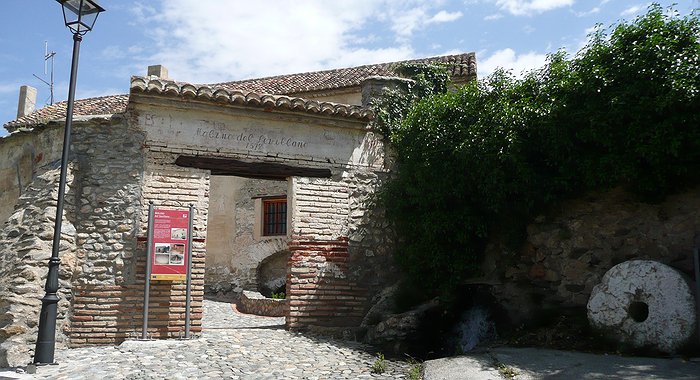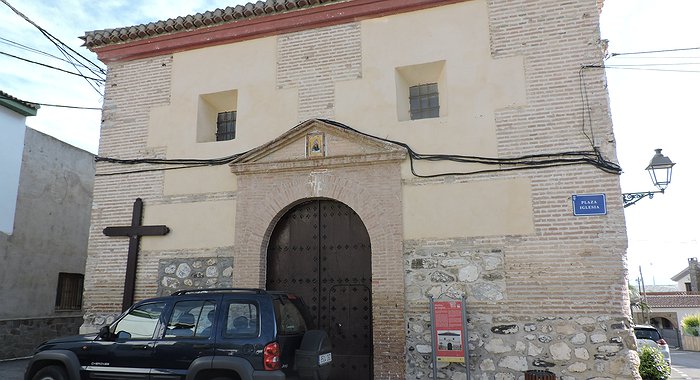I agree Our site saves small pieces of text information (cookies) on your device in order to deliver better content and for statistical purposes. You can disable the usage of cookies by changing the settings of your browser. By browsing our website without changing the browser settings you grant us permission to store that information on your device.
Municipality of the province of Granada formed by the towns of Acequias, Béznar, Talará, Mondújar, Chite and Murchas. The most important nucleus is formed by Talará and Mondújar. In these towns you can find most of the services. The furthest town from this centre is Béznar, about 4 km away.
The town of Acequias is located on the south-western slope of Sierra Nevada, between the Torrente River and the Pleito ravine, at an altitude of 869 m. It is 5 km from Dúrcal, 3 km from Talará and 29 km from Granada. The economic resources of its 205 inhabitants are mainly agricultural: olive trees, almond trees, cherries, quinces, although it has a roof and brick factory.
The location in which this beautiful town is located makes us enjoy various landscapes such as the view of the town from the access road from Dúrcal before descending to the Torrente River, crowned by the Cerro Alto and the high peaks of Sierra Nevada in the background. Also, from the Sierra Nevada, which can be accessed by car lanes, the singular beauty of the whole Lecrín Valley can be appreciated.
Another of the tourist attractions of this municipality that brings together 6 towns is the gastronomy, which covers a great repertoire of typical dishes.
The most typical dishes of the town of Acequías , Béznar and Mondújar are: the stew of fennels and the orange soaking.
→ Day of the Cross (May 3). It is celebrated with a popular picnic.
→ The patron saint festival of San Antón (17 and 18 January). A polychrome image of the saint is carried in a procession. There is also a street party and fireworks.
These beautiful towns allow both locals and foreigners to carry out outdoor activities, and thus enjoy both their landscapes and their people.
Among the activities of leisure and sports in the municipality of Lecrín, we emphasize:
In Acequias it is typical to see the locals playing cards and dominoes in the tavern. They also practice hunting rabbit, partridge, hare, pigeon, wild boar and mountain goat
| Salida | Llegada | Ruta | Duración | ||
|---|---|---|---|---|---|
| 07:20 | 08:30 | Talará - Granada | 01h 10m | ||
| 07:45 | 08:45 | Talará - Granada | 01h 00m | ||
| 08:15 | 09:15 | Talará - Granada | 01h 00m | ||
| 09:20 | 10:15 | Talará - Granada | 00h 55m | ||
| 10:55 | 12:00 | Talará - Granada | 01h 05m | ||
| 11:10 | 12:15 | Talará - Granada | 01h 05m | ||
| 12:10 | 13:00 | Talará - Granada | 00h 50m | ||
| 15:50 | 16:45 | Talará - Granada | 00h 55m | ||
| 15:55 | 17:00 | Talará - Granada | 01h 05m | ||
| 17:30 | 18:30 | Talará - Granada | 01h 00m | ||
| 20:19 | 20:50 | Talará - Granada | 00h 31m |
| Salida | Llegada | Ruta | Duración | ||
|---|---|---|---|---|---|
| 07:00 | 07:50 | Granada - Talará | 00h 50m | ||
| 10:00 | 10:45 | Granada - Talará | 00h 45m | ||
| 14:00 | 14:55 | Granada - Talará | 00h 55m | ||
| 17:00 | 18:00 | Granada - Talará | 01h 00m | ||
| 20:00 | 20:55 | Granada - Talará | 00h 55m |

